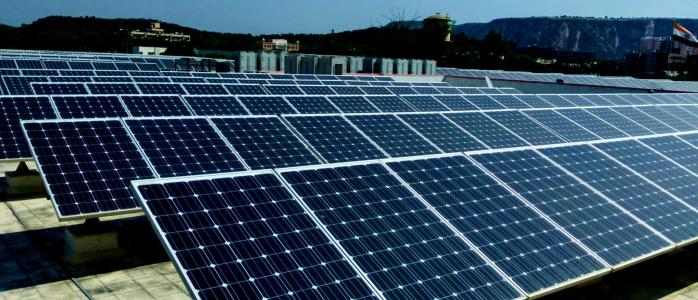



Russia’s invasion of Ukraine and unprecedented rise in temperatures in Arctic and Antarctic Poles have helped highlight the twin benefits of renewable energy: It helps reduce emissions and provides energy security. For developing countries like India, accelerated transition to renewable energy is expected to deliver significant economic benefits as well. The transition to a low carbon economy though will be incomplete without the successful evolution of the green hydrogen technology. In February, the union government announced a host of incentives as part of the Green Hydrogen Policy to develop India as a hub for green hydrogen manufacturing and exports. Corporate boardrooms have also bought into the viability of the technology. Last year, some of India’s biggest companies announced substantial investments in different parts of the green hydrogen ecosystem. These were in the spheres of research and development, establishing Giga factories for fuel cells and electrolysers, and supply and storage. So, can we consider 2021 as the year when India laid the groundwork for a thriving green hydrogen industry?
The list of companies betting big on green hydrogen technology is a long one. Take, for instance, Reliance Industries Ltd, India’s biggest company by market capitalisation. The Mumbai-headquartered company will invest Rs 75,000 crore in renewable energy businesses1, a significant chunk of which will be earmarked for manufacturing electrolysers and hydrogen fuel cells. Heavy engineering major, Larsen and Toubro Ltd joined hands with renewable energy producer, ReNew Power, to invest in the entire value chain of green hydrogen technology2. Sajjan Jindal led JSW Group also joined the bandwagon through a collaboration with Australia-based Fortescue Future Industries3. The company plans to use green hydrogen technology to decarbonise its steel manufacturing operations. Similarly, public sector energy companies are also expected to play a significant part in this domain. State-run energy major IOC Ltd., for instance, has announced setting up the country’s first dedicated plant for green hydrogen manufacturing in its Mathura-based refinery4.
To set up large-scale manufacturing of any new technology, the focus should be on creating a robust supply chain, i.e., local manufacturing of components. Electrolysers lie at the heart of the green hydrogen technology as they split water into hydrogen and oxygen through electrolysis. Local production of electrolysers is crucial to bringing the cost of green hydrogen to $1-$2 per kilogram by 2030. As of now, India doesn’t boast of companies that manufacture electrolysers on a large scale but in 2021, we saw the birth of a new manufacturing sector. In August, US-based renewable energy start-up, Ohmium International unveiled its electrolyser manufacturing capacity in Karnataka with an initial capacity of 0.5GW that can be subsequently ramped up to 2GW5. And, In October, RIL and Danish electrolyser manufacturer, Stiesdal, signed agreements to start local manufacturing in India6. This could well be the start of a new industry that could support India’s economic growth in the coming decades.
Under pressure from government and investors alike, steel manufacturers are pinning hopes on the evolution of green hydrogen to reduce the carbon intensity of their operations. Globally, steel manufacturing contributes to around 7% of total greenhouse gas emissions7. JSW Group, one of India’s largest manufacturers of steel, through its subsidiary JSW Energy, entered a framework agreement with Fortescue Future Industries to assess the opportunities where green hydrogen could be used to make steel, ammonia, and other industrial purposes. Tata Steel Ltd, another manufacturing giant, has already committed to using green technology for its overseas operations, especially in the Netherlands. A CEEW study suggests that green hydrogen-based steel is 60-70% more expensive than existing methods. But, only a minuscule 9% blend of green hydrogen could achieve a 60% reduction in emissions and breakeven with the upper range of blast furnace costs today. A gradual transition could help manufacturers transition profitably to 100% green hydrogen blend by 2030. Therefore, investments made by steelmakers in exploring the potential of green hydrogen technology, combined with enabling policies, could help India meet its emission reduction targets.
Battery powered-vehicles have an edge over hydrogen when it comes to cars and smaller vehicles. But their efficacy in long-distance transport has not yet been proven. This is where experts are betting on green hydrogen. According to a CEEW study, 19% of India’s trucks will have to operate on hydrogen fuel cells if India were to achieve net-zero by 2070. In 2021, India’s largest commercial vehicle manufacturer, Tata Motors Ltd joined hands with Indian Oil Corp LTD to conduct a trial with 15 hydrogen fuel-cell-powered buses8. Others like Ashok Leyland Ltd are also in the process of testing their fuel cell-driven products. NTPC Ltd, the country’s biggest power generator has also floated a tender to procure hydrogen fuel-cell driven buses9. Reliance’s investment in a fuel-cell manufacturing Giga factory in Gujarat could also prove to be a game-changer in this regard. Investments from the likes of IOCL also augurs well as this would ensure investments in production, storage, and supply of green hydrogen.
The union government plans to develop India as an export hub for green hydrogen and specifically for electrolysers. This is one of the prime targets of the National Hydrogen Mission. Recently, Mukesh Ambani, chairman, Reliance Industries Ltd, estimated that renewable energy exports, including green hydrogen, from India could be as much as USD 500 billion in the next two decades10. A thriving local production ecosystem will not only create a domestic market but is expected to push exports as well, especially to countries such as Japan, South Korea, Singapore, and others. Export is considered lucrative since companies draw higher profit margins. Therefore companies investing in green hydrogen and related components will benefit if India evolves as one of the global export hubs. This would also offer India an opportunity to lead the energy transition and generate jobs that could make the transition just and equitable.
References
1 Reliance Industries to invest Rs 75,000 crore in four renewable energy gigafactories, The Economic Times
2 L&T and ReNew join hands to tap green hydrogen business, Mint
3JSW Energy, Australia's Fortescue Future join hands for green hydrogen, Business Standard
4IOC to build India's first green hydrogen plant at Mathura refinery, Business Standard
5Ohmium launches green hydrogen electrolyzer gigafactory, The Times of India
6RIL and Denmark’s Stiesdal to manufacture HydroGen Electrolyzers in India, Mint
7Iron and Steel Technology Roadmap, International Energy Agency
8Tata Motors bags order of 15 hydrogen-based fuel cell buses from Indian Oil Corporation Ltd., TATA Motors
9NTPC floats tender for deploying hydrogen fuel cell buses in Delhi, Leh, Mint
This Explainer has been curated by Malyaban Ghosh, Communications Specialist at CEEW, with extensive inputs from Deepak Yadav, Programme Associate at CEEW.
CEEW Explains endeavors to declutter complex yet pertinent developments in the realm of climate science that impact our ecology, economy and climate.





Add new comment